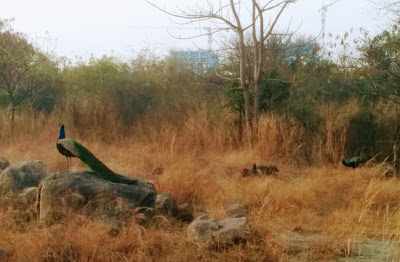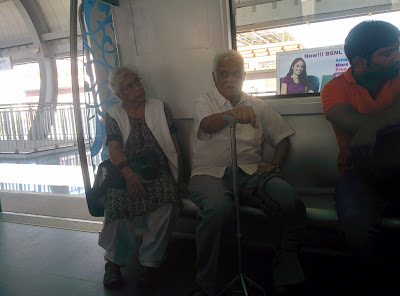I've recently read two write ups of Eric Barker on Emotional Intelligence, and she's like an EI 101. A level of detail that seems to literally spell it out. Here's another one......longish, but clear, straight and simple one from her:
Eric Barker - Emotionally Intelligent Friendships
"So what part of emotional intelligence is critical for friendships?
Emotional intimacy.
So what is emotional intimacy?
Emotional intimacy is the experience of being deeply connected to another person who knows and understands your most important feelings and who shares his or her own with you.
Yeah, that sounds nice, but it's still at Hallmark Card levels of pleasant vagueness. So we can probably recognize the concept better by looking at its opposite.
If there were a label for this problem in the Diagnostic and Statistical Manual of Mental Disorders, it might read something like “Emotional Intimacy Deficiency—a problem characterized by a sense of shallowness in one’s relationships with others, associated with a failure to recognize or express feelings, to reveal personal details about oneself, to be vulnerable or let anyone help you, to comfortably share attention, or let go of control, and to listen without having to solve a problem.
This won't shock you at all, but research shows men are far worse at this than women. Both sexes certainly struggle, but this is a department where men really lag behind.
And that causes a lot of problems for men. Serious problems. Not just unfulfilling relationships -- it's more akin to a chronic emotional illness that affects every area of life.
That said, women's friendships aren't perfect either. We're going to dive into the research and see the most common ways both sexes struggle with friendship, what they can do about it, and how they can learn from each other to improve.
So how do you increase emotional intimacy and build emotionally intelligent friendships? It comes down to six steps. Let's get to it...
1) “Know Thyself”
The thing everybody skips. Knowing yourself means you know what you want and need, and this is critical for both picking new friends, and strengthening existing relationships.
How many friends would you optimally have? What level of closeness do you need? How frequently do you want to communicate? You want to ask yourself, "What features of a friendship will be most fulfilling to me in the long run?"
So take some time to think about what you want and need. (No, that 2 seconds between sentences doesn't count. Really sit down and take a half hour and think. And write stuff down.)
Time to be a little more deliberate.
So before we go to work on developing emotional intimacy, let's find out what's been getting in the way of it. In the modern world, what's the biggest obstacle to adult friendships?
2) Make The Time
Actually, you can't "make time." We all have 24 hours in a day. The more accurate thing to say is "make time with your friends a priority." What friendships need to grow intimate and strong is hours.
Spending time with someone is a sure indicator that you value him; no one likes to feel undervalued.
Unsurprisingly, in adulthood the biggest thing that takes away friend-time is family-time. And while no blogger in his right mind would ever type, "You should spend less time with your family," he might be able to get away with saying something like the far more acceptable, "Balance is critical."
Okay, so you know what you want and you're making pals a priority. But which of your friends do you need to focus on building emotional intimacy with?
3) Must, Trust, Rust, And Just
Looking at the
research, the types of friends that men and women have fall into the same four categories: must, trust, rust and just.
"Must" friends: The inner circle. The closest of the close.
"Trust" friends: Not inner circle, but people you trust, share confidences with and know are there for you.
"Rust" friends: They're pals simply because you've known them a long time. (If it had more than that, they'd be "must" or "trust.")
"Just" friends: Closer than acquaintances and you may see them regularly with a group, but you're not tight with them.
What's critical here when it comes to emotional intimacy is those "must" friends. And "trust" friends are important because they can, with work, be promoted to "must" friends.
First and foremost, you want to work on strengthening those "must" friendships and devoting more time to them. And you want to evaluate which of your "trust" friends meet with your "know thyself" criteria and might be worthy of elevation. "Rust" and "just" friends are good for rounding out your social circle but should receive less attention and investment.
What's the first step in strengthening those "must" and "trust" friends -- or finding totally new ones?
4) Be Proactive
You're going to need to do some legwork. You need to be proactive and initiate contact.
And you need to make concrete plans. I live in Los Angeles and in this city saying, "We should get together sometime" is pretty much synonymous with, "I have no intention of ever seeing you again."
Specify places and times or your friendships will be determined by serendipity, which is the euphemism lazy people use for "dumb luck."
The optimistic angle here is that if you're being passive you can pretty much be certain other people are being passive too. So if you lead, some will follow.
And what should you look for when meeting new folks who might become future "must" or "trust" friends? All the research agrees:
similarity is key. Not only does it draw us to people, it also makes friendships more likely to last.
Similarities also occur when tastes and interests match up, and similarities make friendships easier to maintain. And, unless you are interested in hanging out with people who make you feel bad about yourself (not a good interest to have), finding someone who conveys that you are likeable to them will be very reinforcing to your self-esteem.
Beyond similarity, you should also look for
people you want to learn something from. Since you took the time to sit down and "know thyself," think about the person you want to be. Your best self.
Who do you want to rub off on you? To make you a better spouse, parent, worker or human being?
Okay, you know what you want, you're making time, and you're proactive. So what's the real key to developing emotional intimacy with your friends?
5) Communication
Yeah, you hear "communicating is vital" constantly from experts but few ever break it down so you know how to actually do it.
You want to focus on four primary elements: creating safety, vulnerability, emotional expressiveness, and active listening.
Creating safety: Is my friend going to feel comfortable opening up to me? Am I being too judgmental? Or, at the opposite extreme, too nosy and pushy?
Vulnerability: Are you sharing personal thoughts and feelings with them? Reciprocity is powerful and this is vital to helping both of you. Quick litmus test: are you scared to talk about the subject? Then you're being vulnerable.
Emotional expressiveness: Don't just talk thoughts. Talk feelings. Yours and theirs. (Guys, if you're recoiling at this, you're proving the point that you need to work on it.)
Active listening: Good listeners don't just hear; they make the other person feel heard. Nod, acknowledge, and summarize what your friend said for confirmation. As former FBI hostage negotiator Chris Voss advises, if they respond "Exactly" -- you're doing it right.
So you have the tools to build emotional intimacy. But once you have it, how do you keep a solid friendship alive?
6) Upkeep
Friendships require upkeep, like a plant. Yes, some friends are succulents that require little watering but you’re probably forgetting all the ones that turned brown and ended up in the trash.
Women maintain friendships largely through communication and staying in frequent contact… In contrast, only 10% of the men maintained friendships through frequent contact...
But ladies face problems as well. Due to the amount of communication and openness, women are more likely to damage their friendships than men. Survey results show women were more likely to say they lost a friend because of something they said or did.
That said, women are more likely to make efforts to repair damaged friendships, while men are more likely to let the relationship dissolve.
So women might want to put more effort in to not getting offended. And given how difficult it can be for men to make "must" friends, they should learn from the ladies and make more attempts to fix a troubled friendship rather than just moving on.
(To learn how neuroscience can teach you to be more emotionally intelligent, click
here.)
Alright, we've learned a lot. Time to round it all up and see how all this leads to a more meaningful life..."






































